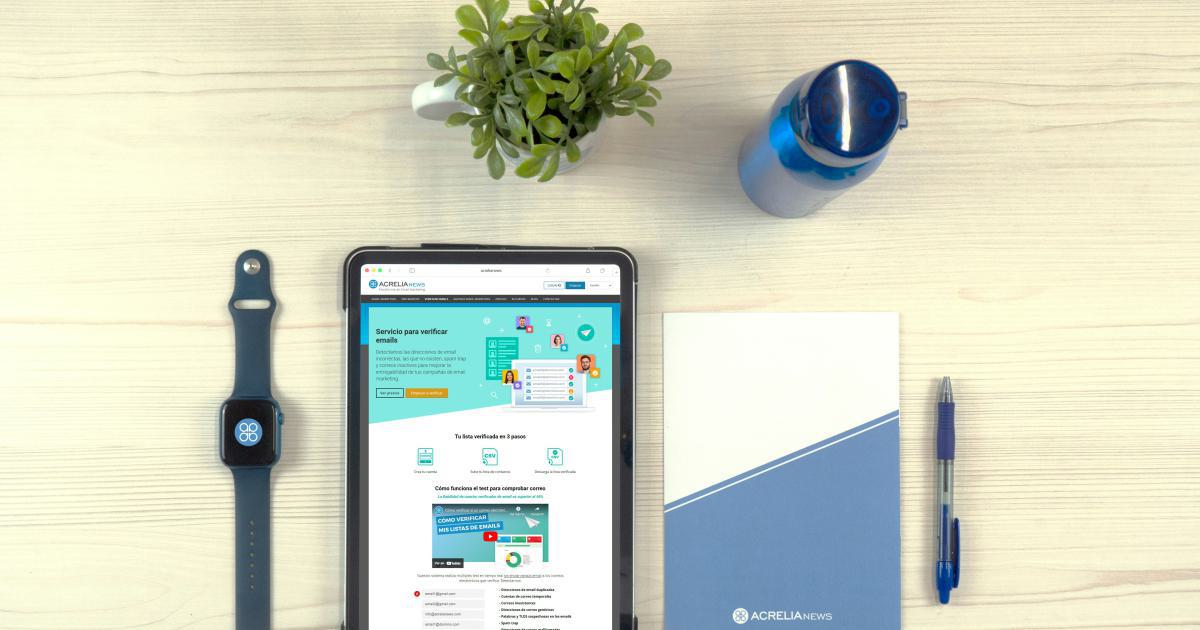Maximizing Reach: Content Distribution Channels for Low-Cost Marketing


Unlocking the Power of Low-Cost Content Distribution
In today's digital landscape, businesses of all sizes are facing the challenge of reaching their target audience effectively and efficiently. With the ever-increasing competition for attention, it's crucial for marketers to explore cost-effective content distribution channels that can help them amplify their message and connect with their desired customers.
This comprehensive guide will delve into the world of low-cost content distribution, providing you with a roadmap to maximize your reach and impact through strategic utilization of various channels. From social media platforms to email marketing and beyond, we'll explore the most impactful and budget-friendly options to help you grow your business without breaking the bank.
The Importance of Cost-Effective Content Distribution
In the crowded digital arena, standing out from the competition can be a daunting task, especially for small businesses and startups with limited marketing budgets. Traditional advertising channels, such as print, television, and radio, can be cost-prohibitive, leaving many organizations struggling to find effective ways to reach their audience.
This is where the power of low-cost content distribution comes into play. By leveraging a variety of digital channels, businesses can amplify their message, engage with their target audience, and drive meaningful results without the need for large-scale advertising investments.

Unlocking the Potential of Social Media
Social media platforms have emerged as powerful tools for cost-effective content distribution. Platforms like Facebook, Twitter, Instagram, and LinkedIn offer businesses the opportunity to connect with their audience, share valuable content, and build brand awareness at a fraction of the cost of traditional advertising.
One of the key advantages of social media marketing is the ability to target specific demographics and interests, ensuring that your content reaches the right people. By leveraging audience targeting, businesses can optimize their content distribution and maximize their return on investment (ROI).
Additionally, social media platforms often offer affordable advertising options, such as sponsored posts and boosted content, that can further extend the reach of your content without draining your marketing budget.
Case Study: Small Business Success on Social Media

XYZ Boutique, a small clothing store, faced the challenge of competing with larger retail chains in their local market. By leveraging the power of social media, they were able to achieve remarkable success.
The business began by creating a strong presence on platforms like Facebook and Instagram, regularly sharing high-quality product photos, behind-the-scenes content, and engaging with their followers. They also ran targeted social media advertising campaigns, promoting their seasonal collections and special offers to a highly relevant audience.
Within the first year, XYZ Boutique saw a significant increase in website traffic and in-store sales, with a large portion of their new customers citing social media as the primary driver. The cost-effective nature of their social media strategy allowed them to allocate more resources to other areas of their business, ultimately contributing to their continued growth and success.
Harnessing the Power of Email Marketing
Email marketing remains a highly effective and low-cost content distribution channel for businesses of all sizes. By building a targeted email list and crafting engaging, value-driven content, organizations can connect directly with their audience and drive meaningful results.
One of the key advantages of email marketing is its ability to deliver personalized and segmented content, ensuring that your message resonates with the right people. By leveraging email list segmentation and targeted campaigns, businesses can maximize the impact of their content distribution efforts.
Moreover, email marketing platforms offer a range of affordable options, from free or low-cost entry-level plans to more robust solutions for larger organizations. These platforms provide robust analytics, automation, and optimization tools to help businesses refine their strategies and improve their ROI.
Case Study: Startup's Email Marketing Success

When XYZ Startup was in its early stages, they recognized the importance of building a strong customer base and driving brand awareness on a limited budget. They turned to email marketing as a key component of their content distribution strategy.
The startup began by collecting email addresses from their website visitors, event attendees, and social media followers. They then segmented their email list based on customer behavior, interests, and demographics, allowing them to deliver highly personalized and relevant content.
Through a series of engaging email campaigns, the startup shared valuable industry insights, product updates, and exclusive offers. They also leveraged email automation to nurture their leads and stay top-of-mind with their audience.
Within the first six months, the startup saw a significant increase in website traffic, lead generation, and customer conversions. Their email marketing efforts not only helped them acquire new customers but also fostered stronger relationships with their existing audience, ultimately contributing to their rapid growth and success.
Leveraging the Power of Search Engine Optimization (SEO)
While social media and email marketing are powerful tools for content distribution, optimizing your content for search engines can also be a highly effective and low-cost strategy. By ensuring that your content is easily discoverable through search, you can tap into the vast pool of potential customers actively seeking information or solutions related to your products or services.
Search Engine Optimization (SEO) involves a range of techniques, such as keyword research, on-page optimization, and link building, that can help your content rank higher in search engine results pages (SERPs). By implementing a well-crafted SEO strategy, businesses can increase their visibility, drive organic traffic to their website, and ultimately, generate more leads and sales.
One of the key advantages of SEO-focused content distribution is its long-term, sustainable impact. Unlike paid advertising, which typically requires ongoing investment to maintain visibility, well-optimized content can continue to attract and convert new customers for an extended period, offering a more cost-effective and scalable approach to content distribution.
Case Study: Local Business Thrives with SEO-Driven Content

When ABC Plumbing, a local plumbing company, set out to expand their reach in their metropolitan area, they knew they needed to find a cost-effective way to attract new customers. They decided to focus on Search Engine Optimization (SEO) as a key component of their content distribution strategy.
The company began by conducting comprehensive keyword research to identify the search terms and phrases that their target audience was using to find plumbing services in their local market. They then optimized their website content, including their service pages, blog posts, and local listings, to align with these high-value keywords.
In addition to on-page optimization, ABC Plumbing invested in building a network of high-quality backlinks, leveraging industry partnerships, local directories, and guest blogging opportunities to improve their search engine visibility.
Over time, the company's SEO-driven content distribution strategy paid off. They saw a steady increase in organic traffic to their website, with a growing number of leads and conversions coming directly from search engine results. This, in turn, allowed them to reduce their reliance on more expensive advertising channels and focus on delivering exceptional service to their growing customer base.
Exploring the Potential of Influencer Partnerships
In the era of social media, the power of influencer marketing has become increasingly evident. By partnering with social media influencers who have a strong following within your target audience, businesses can tap into a highly engaged and receptive community, amplifying their content distribution efforts at a relatively low cost.
Influencer partnerships can take various forms, from sponsored posts and product reviews to collaborative content creation and brand ambassadorships. By leveraging the trust and credibility that influencers have built with their audience, businesses can effectively reach new customers and drive meaningful engagement.
One of the key advantages of influencer-driven content distribution is the ability to target niche audiences with laser-like precision. By carefully selecting influencers whose values, interests, and followers align with your brand, you can ensure that your content resonates with the right people, leading to higher conversion rates and a better return on your investment.
Case Study: Startup's Successful Influencer Collaboration

When XYZ Wellness launched their line of organic skincare products, they knew they needed to find a cost-effective way to build brand awareness and reach their target audience of health-conscious millennials. They decided to explore the world of influencer marketing.
The startup identified a group of micro-influencers in the health and wellness niche who had a strong following among their target demographic. They reached out to these influencers, proposing a collaboration that would involve product gifting, sponsored posts, and content co-creation.
The influencers, in turn, shared their personal experiences with the XYZ Wellness products, creating authentic and engaging content that resonated with their audience. This content was then amplified across the influencers' social media channels, exposing the startup's brand to a highly relevant and engaged customer base.
The results were impressive. Within the first three months of the influencer campaign, XYZ Wellness saw a significant spike in website traffic, a surge in social media followers, and a substantial increase in product sales. The cost-effective nature of the influencer partnership allowed the startup to achieve maximum impact while keeping their marketing budget in check.
Tapping into the Power of Guest Posting
Another effective and low-cost content distribution strategy is guest posting, which involves creating and publishing content on external, high-authority websites and blogs. By leveraging the established audience and credibility of these platforms, businesses can reach new potential customers, build brand awareness, and position themselves as industry thought leaders.
Guest posting offers several key benefits:
Increased Visibility: By appearing on respected, high-traffic websites, businesses can expose their content to a wider audience and attract new visitors to their own online properties.
Improved SEO: Guest posts often include backlinks to the author's website, which can positively impact search engine rankings and drive more organic traffic.
Enhanced Credibility: Being featured as a guest contributor on reputable websites can help businesses establish themselves as experts in their field, boosting their credibility and trustworthiness.
Cost-Effectiveness: Guest posting is generally a low-cost or even free content distribution strategy, making it an attractive option for businesses with limited marketing budgets.
Case Study: Industry Leader Expands Reach Through Guest Posting

ABC Tech, a leading software development company, was looking to expand its reach and establish itself as an industry thought leader. They decided to implement a guest posting strategy as part of their content distribution efforts.
The company's marketing team carefully researched and identified high-authority industry blogs and publications that aligned with their target audience and expertise. They then reached out to the editors and pitch guest post ideas that would provide value to the readers.
By consistently producing and publishing engaging, informative guest posts on these respected platforms, ABC Tech was able to reach a new pool of potential customers, showcase their expertise, and drive more traffic to their own website.
The results were impressive. The guest posts not only generated a steady stream of new leads but also helped improve the company's search engine rankings, as the backlinks from the guest posts boosted their overall domain authority. This, in turn, led to a measurable increase in organic website traffic and conversions, all while keeping their marketing costs low.
Leveraging the Power of Partnerships and Collaborations
In the world of low-cost content distribution, partnerships and collaborations can be a powerful strategy. By teaming up with complementary businesses, industry influencers, or even non-competing brands, organizations can tap into new audiences, share resources, and amplify their content in a cost-effective manner.
Potential partnership opportunities may include:
-
Co-marketing Campaigns: Collaborating with a partner to create and distribute co-branded content, such as webinars, ebooks, or social media posts.
-
Cross-Promotional Initiatives: Promoting each other's products, services, or content to your respective audiences through channels like email, social media, or website placements.
-
Event Sponsorships: Sponsoring or participating in industry events, conferences, or workshops to reach a targeted, engaged audience.
-
Content Syndication: Sharing your content on your partner's website or platforms, expanding your reach and visibility.
By leveraging the combined resources, networks, and expertise of your partners, you can maximize the impact of your content distribution efforts while minimizing the associated costs.
Case Study: Small Business Thrives Through Strategic Partnerships

When XYZ Local Boutique wanted to expand their customer base and drive more foot traffic to their physical store, they recognized the power of strategic partnerships.
The boutique owner reached out to a complementary local business, a popular café, and proposed a collaborative partnership. Together, they launched a series of co-marketing initiatives, including cross-promotional social media campaigns, in-store events, and a loyalty program that offered discounts at both establishments.
By tapping into the café's established customer base and leveraging the boutique's social media following, the two businesses were able to amplify their content and reach a broader audience than they could have individually. The partnership also allowed them to share resources, such as marketing materials and event planning, ultimately reducing their overall content distribution costs.
The results were remarkable. Within the first six months of the partnership, XYZ Local Boutique saw a significant increase in foot traffic, a surge in social media engagement, and a noticeable boost in sales. The cost-effective nature of the collaboration allowed both businesses to allocate more resources to other areas of their operations, contributing to their continued growth and success.
Unlocking the Potential of User-Generated Content
In the era of social media and digital engagement, user-generated content (UGC) has emerged as a powerful and cost-effective content distribution strategy. By leveraging the content created by your customers, fans, and brand advocates, businesses can tap into a wealth of authentic, engaging material that can be repurposed and amplified across various channels.
UGC can take many forms, including:
- Social media posts: Customers sharing their experiences, product photos, or testimonials on platforms like Instagram, Facebook, or Twitter.
- Reviews and testimonials: Positive feedback about your products or services posted on your website, online directories, or third-party review sites.
- Blog posts or guest articles: Customers or industry influencers creating content that features your brand or products.
By curating and repurposing this user-generated content, businesses can:
- Enhance credibility: UGC provides social proof and helps build trust with potential customers.
- Reduce content creation costs: Leveraging existing content created by your audience can significantly lower your content production expenses.
- Increase engagement: Featuring user-generated content can foster a stronger sense of community and encourage further engagement from your audience.
Case Study: Startup Amplifies Brand Reach Through UGC

When ABC Startup launched their innovative line of eco-friendly office supplies, they knew they needed to find a cost-effective way to build brand awareness and connect with their target audience of environmentally conscious consumers.
The startup decided to implement a UGC-driven content distribution strategy, encouraging their customers to share their experiences and product photos on social media platforms like Instagram and Twitter. They offered incentives, such as discounts and giveaways, to further incentivize their audience to participate.
The startup then curated the best user-generated content and repurposed it across their own social media channels, website, and email marketing campaigns. This not only helped them reduce their content creation costs but also added a layer of authenticity and social proof to their marketing efforts.
As a result, ABC Startup saw a significant increase in social media engagement, website traffic, and product sales. The cost-effective nature of their UGC strategy allowed them to allocate more resources to other aspects of their business, ultimately contributing to their rapid growth and success.
Conclusion: Maximizing Your Reach on a Shoestring Budget
In today's competitive business landscape, the ability to effectively distribute your content and reach your target audience is crucial for success. By leveraging the low-cost content distribution channels outlined in this article, you can amplify your message, engage with your customers, and drive meaningful results for your business - all without breaking the bank.
From social media marketing and email campaigns to SEO optimization, influencer partnerships, and user-generated content, there are numerous strategies and tactics you can implement to maximize your reach and impact. By adopting a strategic, multi-channel approach to content distribution, you can position your business for long-term growth and success.
Remember, the key to effective low-cost content distribution is to continuously experiment, analyze your results, and refine your strategies. Stay agile, adaptable, and focused on delivering value to your audience, and you'll be well on your way to unlocking the full potential of your content and your business.